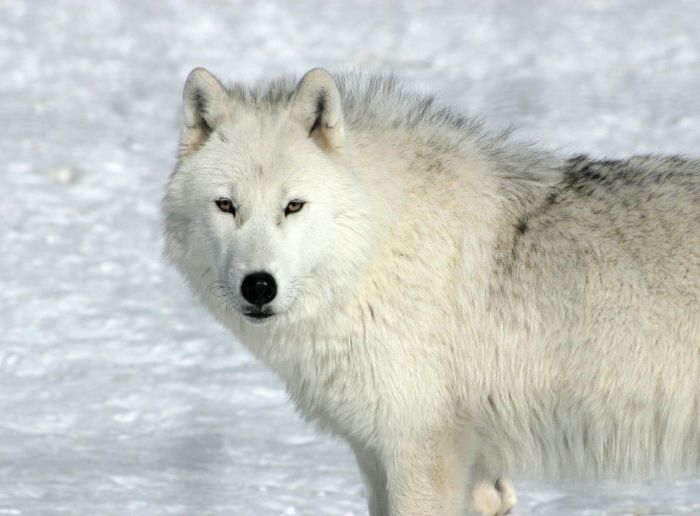|
|
Gray Wolf
|
Wolves in Central and East Asia are intermediate in form and size to northern and southern wolves. Differences in brain size are well defined in different wolf populations, with wolves in northern Eurasia having the highest values, North American wolves having slightly smaller brains, and the southern wolves having the smallest. Southern wolves have brains 5–10% smaller than northern wolves. Though different in behaviour and morphology, northern and southern wolves can still interbreed: the Zoological Gardens of London for example once successfully managed to mate a male European wolf to an Indian female, resulting in a cub bearing an almost exact likeness to its sire.
• Domestication
Studies on the genetic distance for mitochondrial DNA on dogs and Eurasian wolves confirmed that wolves are the exclusive ancestral species to dogs. Domestic dogs possess four mtDNA lineages, suggesting four independent domestication events. A later study identified mtDNA evidence suggesting a common origin from a single East Asian gene pool for all dog populations, while another, using a much larger data set of nuclear markers, points to the Middle East as the source of most of the genetic diversity in the domestic dog and a more likely origin of domestication events. A study by the Kunming Institute of Zoology found that the domestic dog is descended from wolves tamed less than 16,300 years ago south of the Yangtse river in China. Morphological comparisons have narrowed the likely ancestral subspecies of gray wolf to wolves of the Middle Eastern and South Asian variety.
The actual domestication process is a source of debate. Although it is popularly assumed that dogs are the result of artificial selection, the general intractability of adult wolves to human handling has led certain experts to theorise that the domestication process occurred through natural selection when Mesolithic human communities began building permanent settlements in which a new ecological niche (middens and landfills) was opened to wolves. These wolves would have formed a commensal relationship with humans, feeding on their waste over many generations, with natural selection favouring assertive wolves with shorter flight distances in human presence, and causing physical changes related to the redundancy of features adapted for hunting big game.
|
|









